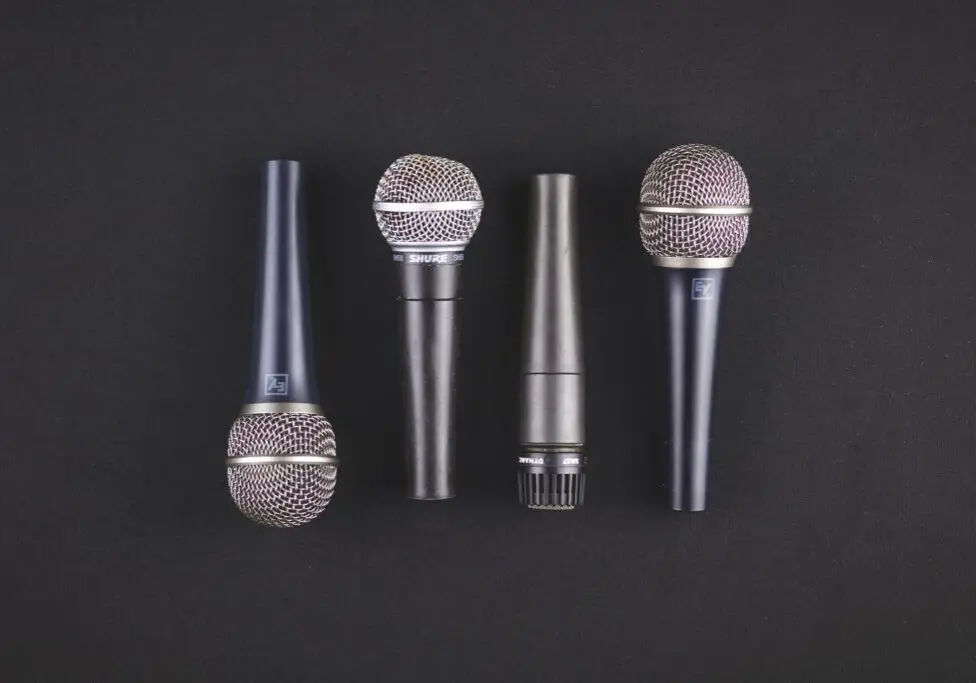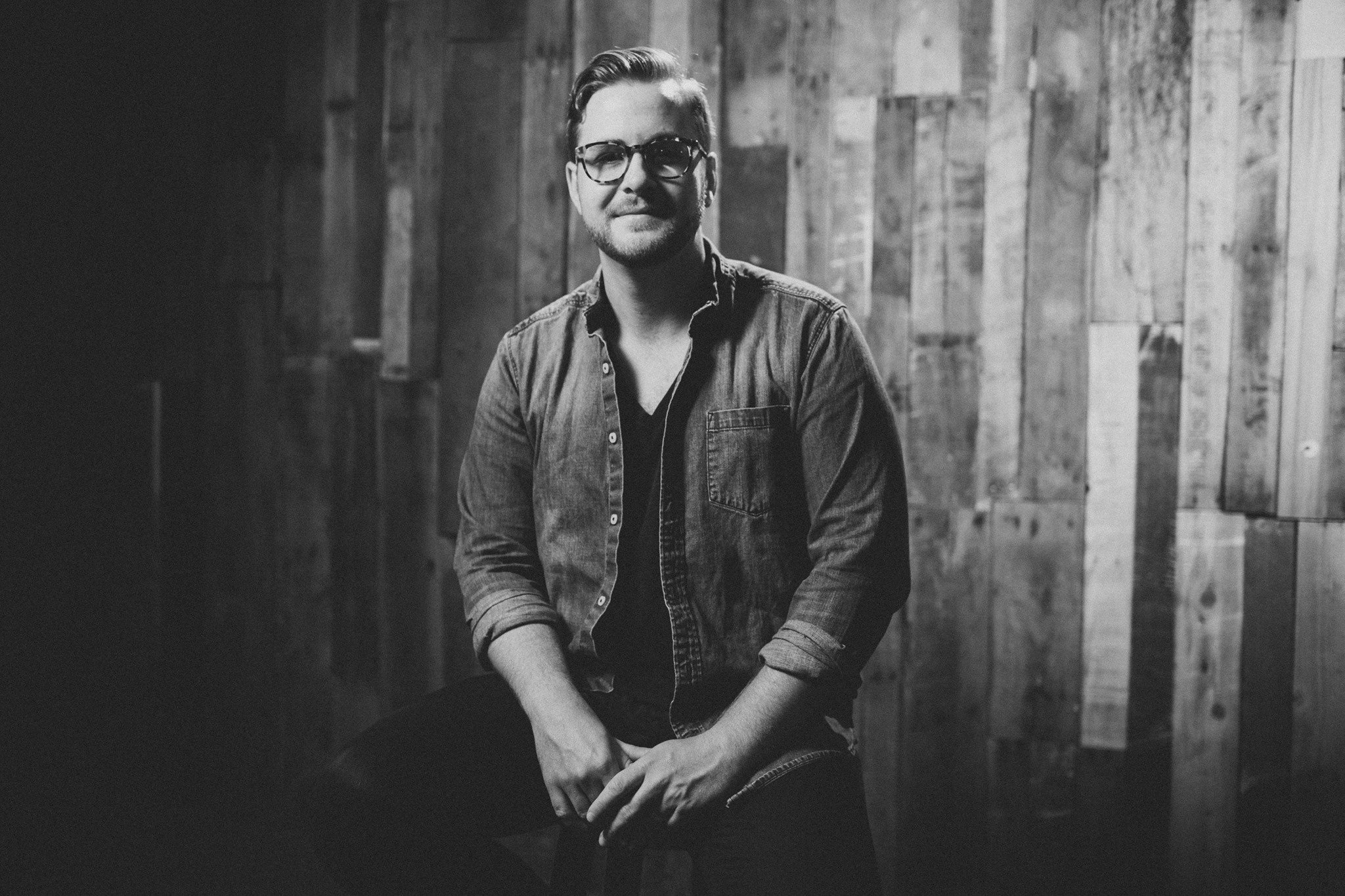Getting a set of mics can be the first step to performing your music live or getting your next single recorded and released.
Now, while that sounds great on paper, if you’ve ever looked into actually purchasing a microphone, you’ll know things get complicated fast.
The world of microphones is a big one.
You have dynamic microphones, condenser mics, mics meant for recording full bands, mics to use when playing live…
And that doesn’t even scratch the surface!
A good microphone can be one of the best tools you can have as a musician, but with so many options available, how do you know what to pick?
To be honest, I’ve been in your shoes before.
As a new musician, getting the best mics for my gigs, as well as good microphones to record with, was a winding, confusing road.
However, I eventually did find some mics I liked and learned a lot in the process.
Now, I want to pass that information on to you!
If you’ve ever been curious about where to start when it comes to mics, look no further.
Below, I’ll outline everything you need to know about microphones including the best uses for each type.
Types of Microphones
Like we touched on earlier, there are many, many different types of mics out there.
Knowing the difference between each one and the nuances that make them unique takes time and experience.
However, if you’re just diving into this world, below is a quick crash course on what you can expect to come across when looking for a new mic.
Dynamic Microphones

Okay, let’s start off with some word association.
When I say the word “microphone,” what do you see?
A little black stick with a silver, mesh ball on top?
Well, that kind of mic, often seen in the hands of famous musicians everywhere, is actually a type of dynamic microphone!
Now, not all dynamic microphones necessarily look like that, but these powerful little mics have some specific applications, both for recording and for playing music live.
Dynamic microphones are some of the oldest microphones (in terms of design) to date, and they work using a pretty simple makeup.
When sound waves (such as from a voice singing or an instrument being played) hit the microphone, a tiny piece of plastic or polyester film (called the diaphragm) vibrates.
This diaphragm is held between two metal coils, and when it moves, it mimics the pattern of the sound wave.
This mimicked sound wave is then relayed to speakers and can be heard again!
Because of the relatively simple design, dynamic mics are pretty hardy in their construction.
They can take quite a bit of wear and tear, which makes them ideal for live performances or recording loud sounds like drums or instruments being played through an amp.
However, these mics aren’t quite built for recording all of the nuances and intricacies we often hear with our instruments and voices.
For that, we’d need a different kind of mic!
Condenser Microphones

If you’re interested in recording more as a musician, then a good set of condenser mics may be just what you need.
Like their dynamic cousins, these mics also contain a diaphragm.
However, in this case, the diaphragm is made up of a thin piece of metal and a metal backplate.
Electricity creates a static charge between them, which, when hit with a sound wave, produces a vibration replicating that sound.
These mics are powered by electricity, whereas dynamic mics don’t necessarily need electricity to work.
For practical applications, condenser mics are mostly used to record the subtle details found in instruments as well as in the human voice.
These mics are capable of producing some incredible detail in recordings, and when using two or three of them, you can get some pretty incredible nuance in your music.
It’s important to note that these mics won’t always serve you well in a live setting, so take that into consideration when choosing which mics you’ll be needing for your specific musical endeavors.
Ribbon Microphones
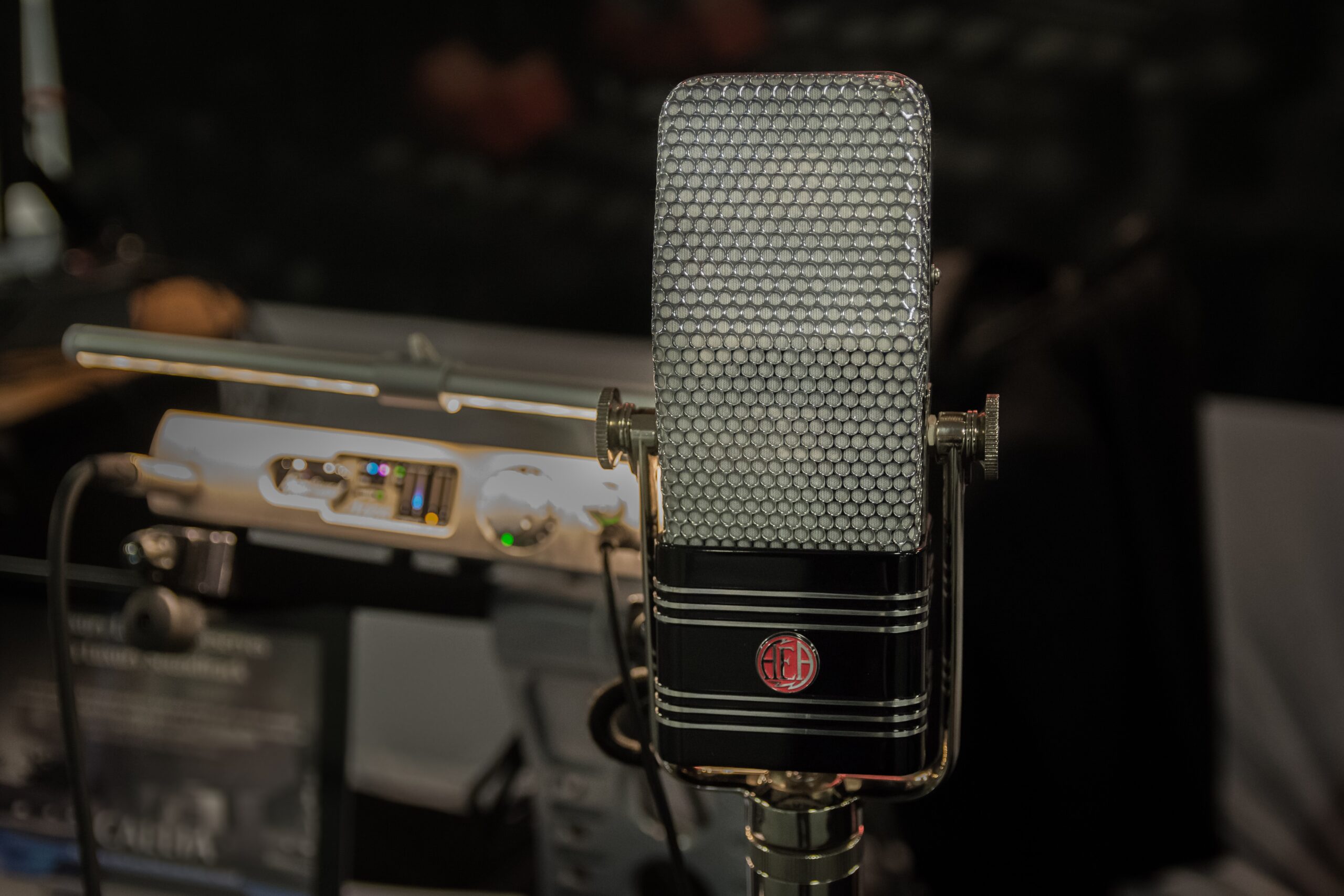
Ribbon microphones are bi-directional microphones, meaning they can receive sound from the front and back of the mic.
They work by using a thin piece of metal ribbon that’s held by a strong magnetic field.
They’re pretty neat in their application, particularly in the broadcasting world!
Because of their build, these mics are great for picking up the low, warm sounds in voices and other instruments.
Radio hosts famously use them for creating that “talk show” voice, and that’s once again due to this mic’s ability to emphasize the low end without adding any more character beyond that.
In music, these kinds of mics can be great to use alongside other mics as a way to get a fuller sound out of your guitar, vocals, or piano.
They can also be used overhead for choirs, and can even be used to mic up the kick on a drum set.
Ribbon microphones do have a bit of a reputation for being susceptible to damage, which is both true and false.
If you’re singing too close to the mic, the vibrations can dislodge the metal ribbon and break the mic.
However, using a pop filter (more on those later) can pretty easily alleviate some of that potential breaking.
So, problem solved!
Lavalier Microphones
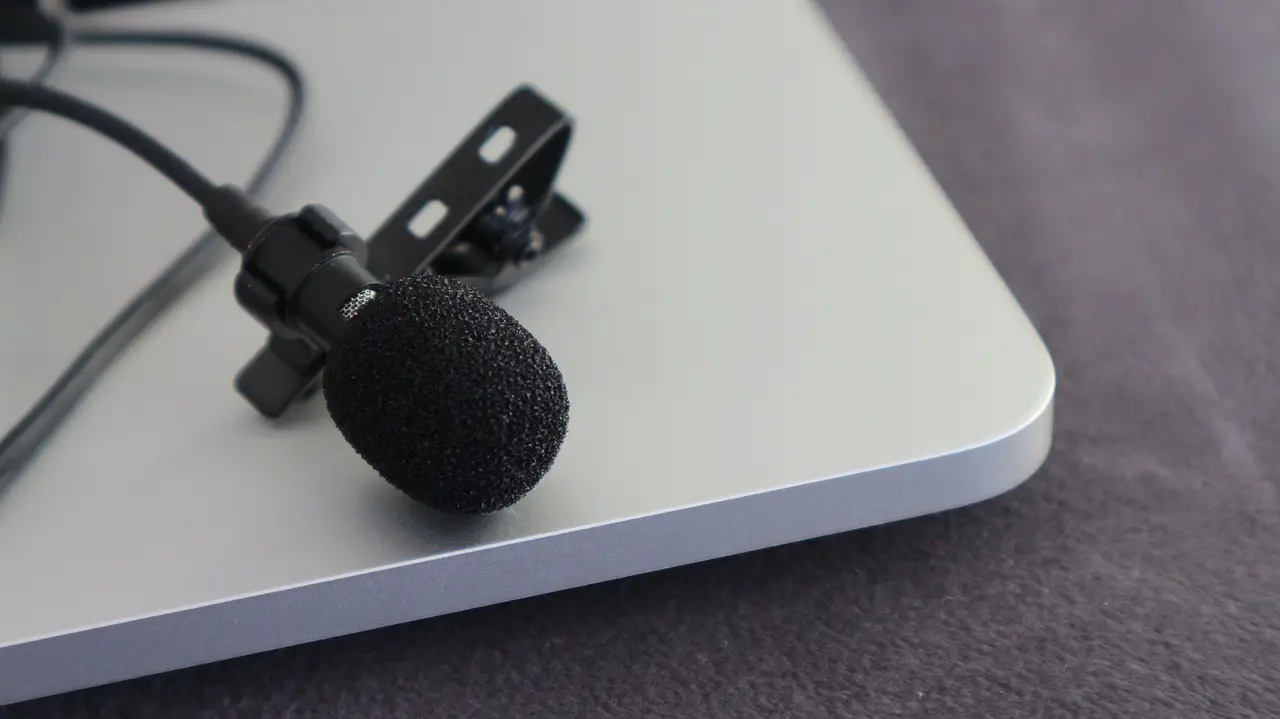
If you’ve ever been to a wedding or an event with a keynote speaker, chances are you’ve seen these handy little mics.
Lavalier microphones are small, portable mics that can be attached via a clip to a person’s clothing.
For public speaking, these mics are great as you can clip them on, forget about them, and talk comfortably without having to worry about holding a mic the entire time.
For a musician, these mics realistically won’t be the most helpful.
While there are some high-quality lavalier mics out there, generally those available don’t have the best sound quality.
They can get a speech across, but if you’re trying to mix in additional instruments, your vocals can get lost pretty quickly.
Shotgun Microphones
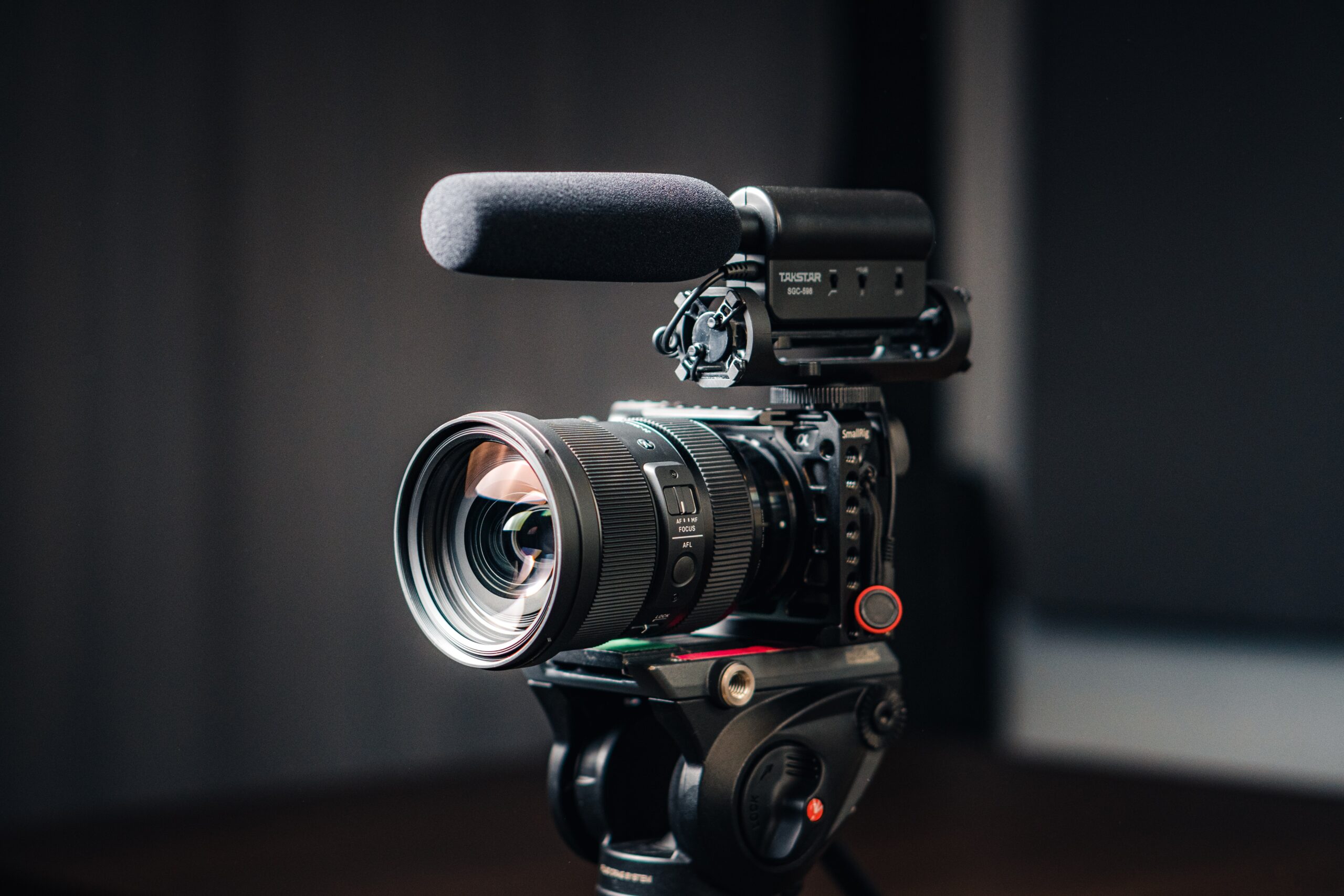
Shotgun mics, while not as common in the recording studio, are a big part of the television and film industry.
You’ve probably seen these kinds of mics held by boom operators on long sticks.
The reason? Well, shotgun mics pick up sound in a single direction, meaning they’re perfect for honing in on a single bit of dialogue or an important bit of sound for narrative context.
For film, these applications are boundless.
However, for music, shotgun mics are a bit more limited.
While outdoors they can be useful to isolate the sound of a live performance, in a studio they tend to dampen and nullify a lot of the color and nuance we want to hear from the instrumentation and vocals in a song.
So, for a musician, shotgun mics might not be the call.
Factors to Consider When Buying a Microphone
As an artist, buying your first mic boils down to a handful of different factors.
Yes, the tech and specs behind a microphone are certainly important and should inform your decision, but ultimately they’re peripheral concerns.
Really, buying a mic comes down to what you’re going to be needing it for.
Are you playing live? Or do you want to focus more on recording?
If you’re doing live gigs, will they be outside? How large are the shows you’re playing?
What instruments do you want to record? How do you want them to sound?
Different mics address different questions, so before you buy the first mic you see, take a look at your goals as a musician and if the microphone can help you achieve them.
Live Performances

Live performances pose all sorts of challenges for the gig-based artist.
Moving gear to different venues, performing in weird weather conditions, and having to manage and maintain your equipment is a tedious process.
For some musicians, the joy of performing is well worth the hassle.
That being said, if you’re going to be moving lots of different equipment around, plus competing sonically with the already-present sound in a live atmosphere, you’re going to need some hardy equipment.
Which is why, for live performances, I typically recommend dynamic mics.
Dynamic mics, while not only more affordable than a condenser microphone, have the added benefit of being a bit more durable.
While neither dynamic mics nor condenser mics are particularly fragile pieces of equipment, condenser mics tend to be very sensitive to noise.
If you’re fumbling around with your mic and moving around with it, those noises will come through a lot more noticeably with a condenser mic.
Dynamic mics have the benefit of being able to pick up the projected vocals of a live performer without becoming mushy.
These mics also work well for instrumentation in live settings, making them ideal for the whole band.
For vocals, a microphone I’d personally recommend is the Shure SM58 Dynamic Cardioid Vocal Microphone.
It’s affordable, easy to take on the go, and has a host of applications. Even for the veteran performer, these microphones are the industry standard.
Another great pick is the Sennheiser Professional MD 421-II Cardioid Dynamic Instrument Microphone.
This microphone is much pricier, which is important to keep in mind before purchasing.
However, it’s excellent if you’re miking up your acoustic instruments, whether that’s piano, guitar, violin, or whatever else you might have!
Studio Recordings

For live performances, having a durably built mic is key.
However, when you’re in the studio, a mic that can pick up the tiny little details in your voice and instrument becomes a crucial investment.
While there’s certainly a market for music that has a lo-fi aesthetic, in my opinion, recordings that have less background interference ultimately give you greater control as an artist.
Luckily, you no longer need tens of thousands of dollars to get a good mic.
Nowadays, solid equipment is becoming more and more widely available, so if you have a bit of money to set aside to get your home setup going, you’re in luck.
For studio recordings, because we want a mic that’s a bit more sensitive to the intricacies of the recording, we’ll probably opt for one (or a couple) condenser mics.
Now, before we go any further, know that many condenser mics out there are going to be pretty spendy.
Below, I’ll include some links to an option on the pricier side of things, and then something that’s a bit more affordable if you’re just getting into home recording.
Regardless of the price range, at the end of the day, it’s important to know how to use your microphone.
Sure, you could spend a few thousand on an ultra-powerful mic, but if you’re not using it well, it won’t make much of a difference compared to a microphone that cost you a couple hundred bucks.
So, if you’re new to the world of studio recording, start small and build your way up. And who knows? The mic you get that was only $200 could end up being your favorite mic to use in most situations!
For a more affordable condenser mic, I’d definitely recommend the Rode NT1-A Large-Diaphragm Condenser Microphone.
This mic is super versatile, making it perfect for the home studio. Plus, at about $200, it won’t break the bank.
Now, if you’ve got a fairly large budget for a microphone, I would definitely recommend the Neumann U 87 Ai Condenser Microphone.
This mic picks up the low end incredibly well which leads to some warm, deep recordings with tons of nuance and character to them.
It’s a great pick if you’re looking for something new to add to the studio, but once again, it’s pricy.
So, if you’re new to the world of recording, definitely stick with the Rode NT1-A.
Vocals & Instrumentation
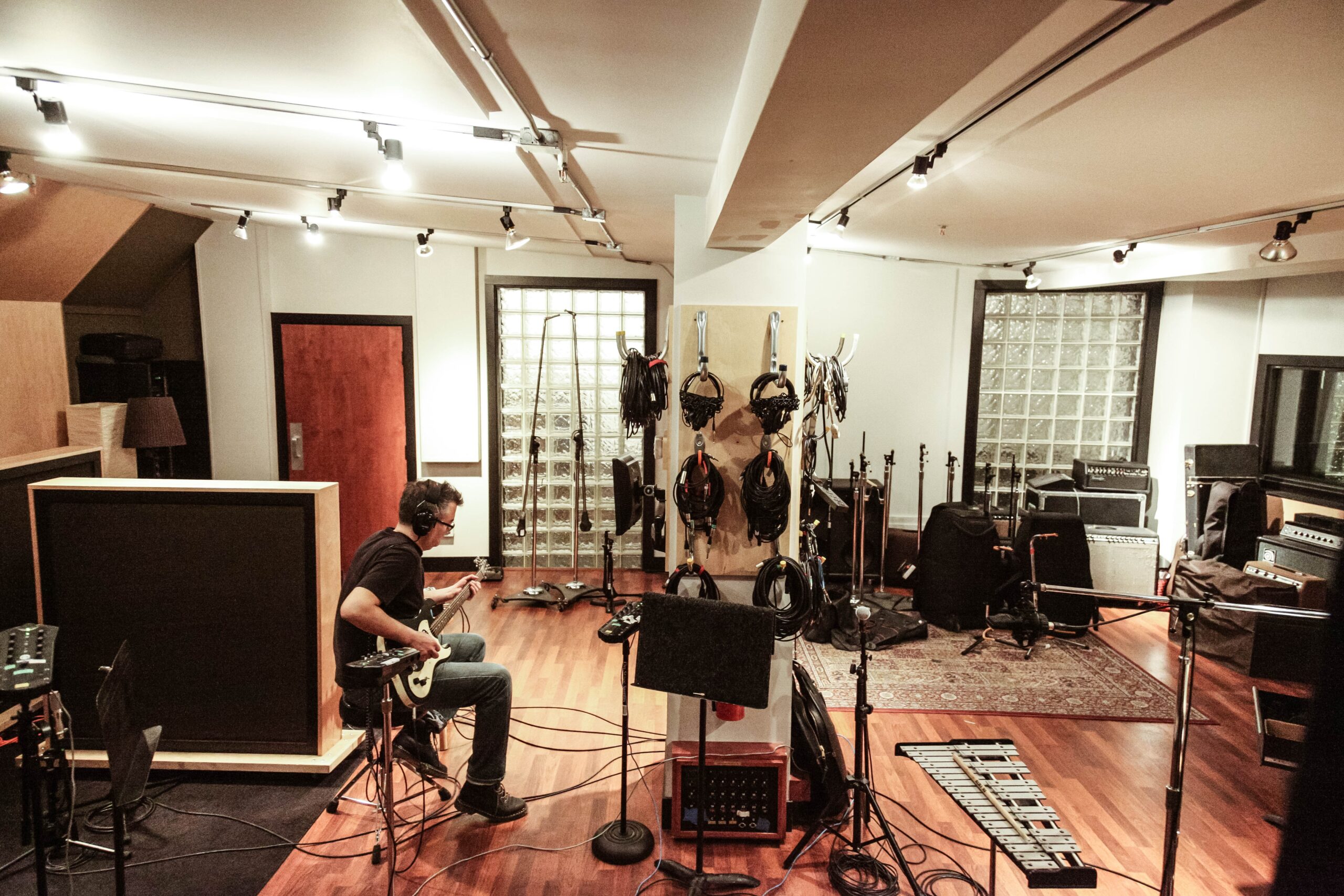
Going hand in hand with mics for studio recording are mics specifically designed for recording vocals and instruments.
Now, in a studio setting, the name of the game tends to be the use of condenser mics.
Because these microphones are so sensitive to detail in sound, you can pick up a lot more than you could with dynamic mics.
However, ribbon mics can be useful for micing up drums or even for recording vocals and guitars to feature the low ends on your track more prominently.
I’ve already linked a few condenser mics above, but one that’s great for recording vocals in particular has to be the Aston Microphones Spirit Large Diaphragm Multi-Pattern Condenser Microphone.
For voices that sing a bit higher than your standard baritone, this mic picks up the mids and highs of a singer without coming through too pitchy.
It’s a great choice for tenors and many female vocalists, but that’s not to say it doesn’t pick up deeper voices as well.
For a solid overhead mic for drums, as well as for recording other acoustic instrumentation, the Beyerdynamic M160 Double Ribbon Microphone is an excellent choice for a ribbon mic.
It’s a decently expensive mic, but if you’re looking to get a more detailed sound from your mic setup, this is a great way to do so.
Podcasting & Streaming
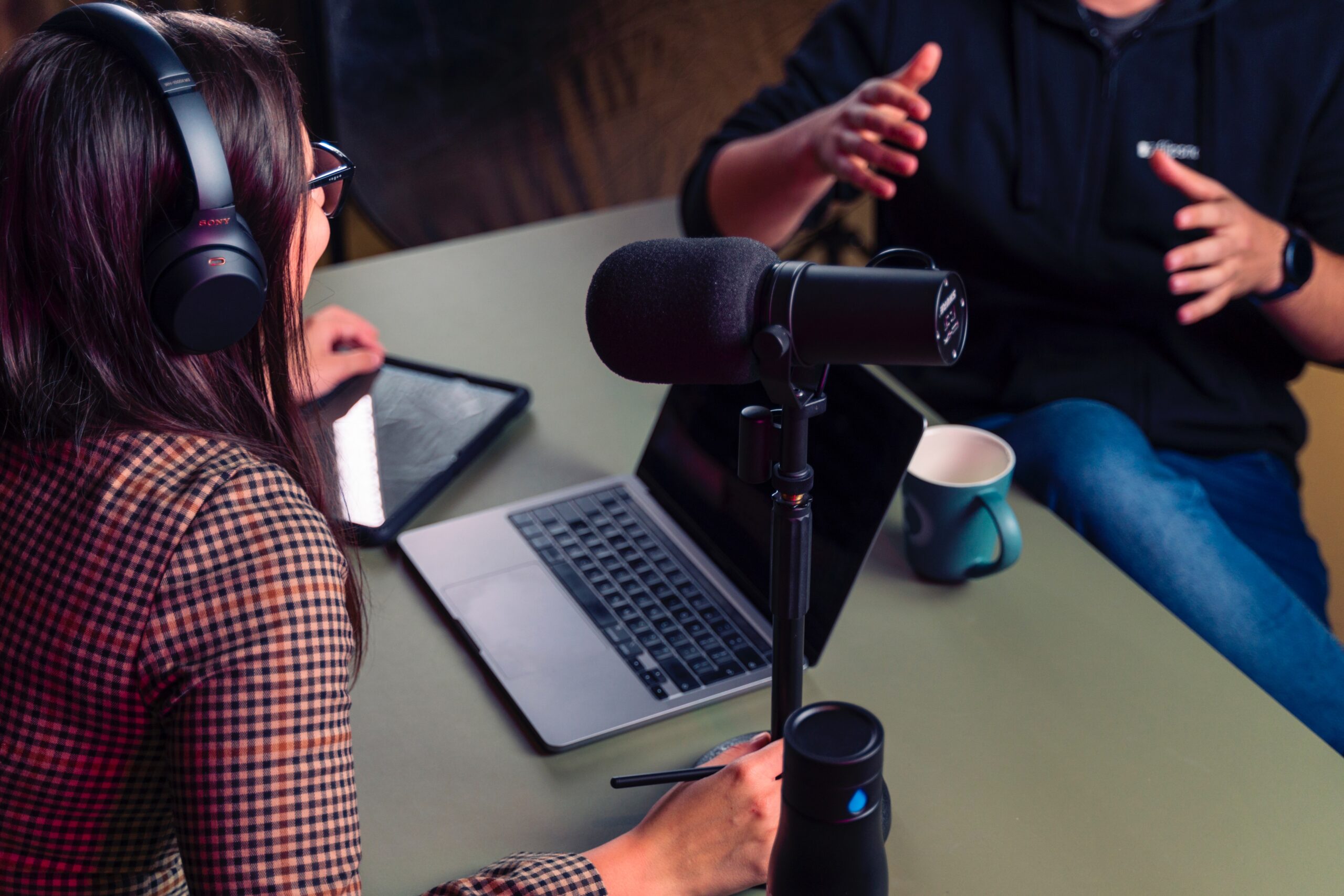
If you’re a content creator alongside being a musician and want to have a mic that works well while you’re streaming or podcasting, a dynamic mic might be your best bet.
And although I do recommend dynamic mics in this situation (simply because they can pick up louder sounds in an open space), condenser mics can work great as well.
Even shotgun mics can do the job!
So, at the end of the day, there are plenty of options to choose from.
Overall, I’d recommend the Shure SM7B.
It features an internal pop filter, which helps keep out any unwanted technical noises and vocal spikes.
It also has an electromagnetic shield that quiets any weird humming noises coming from your computer or other equipment.
If you’re trying to get your music out there by creating content, this mic is an excellent way to do both.
Microphone Accessories
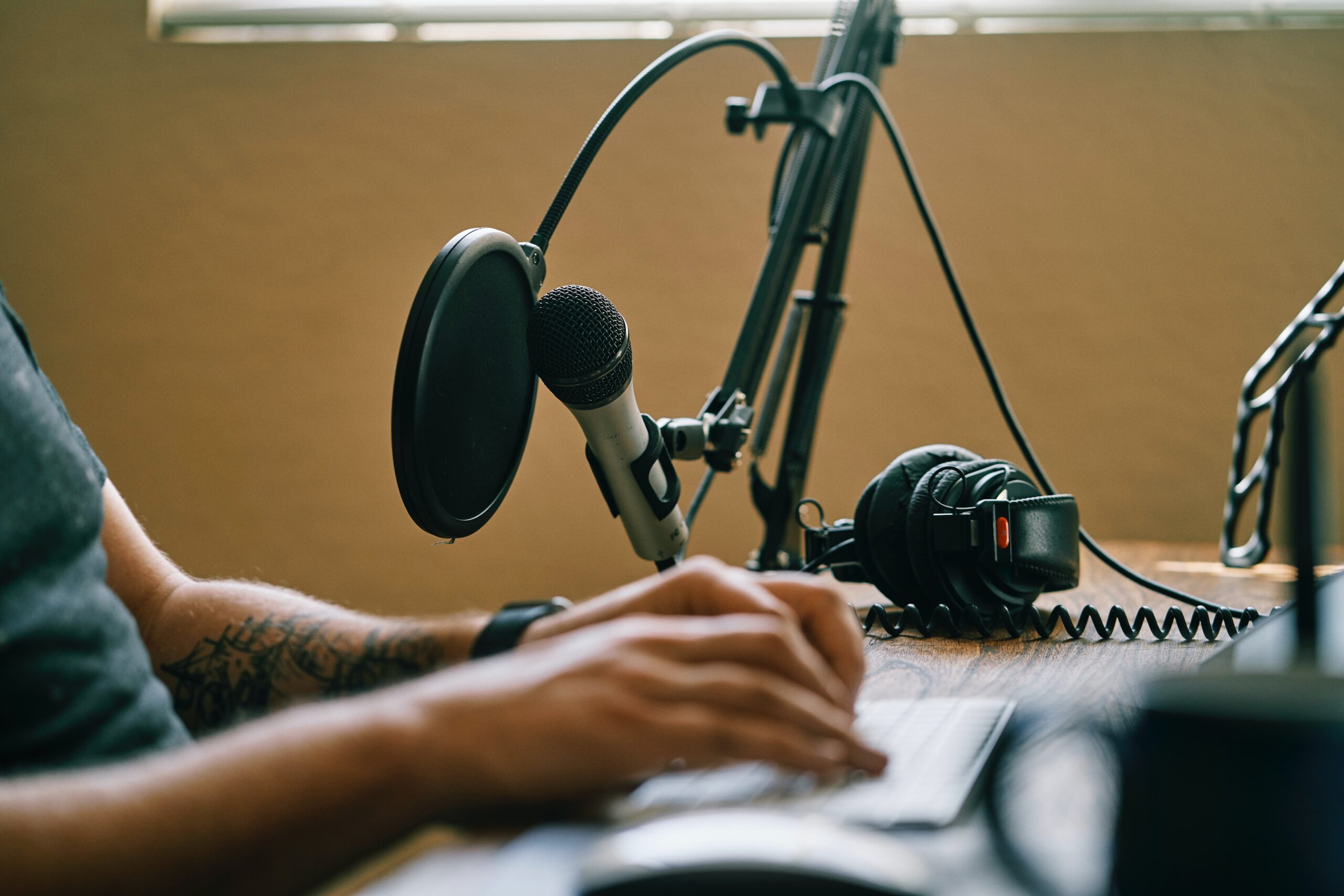
Alright, you’ve got a mic (or two) picked out, but what about any additional accessories you might need?
Unfortunately, most mics you purchase don’t come with cables, pop filters, or an audio interface. Some do, but most don’t.
So, before you settle on your mic, let’s take a look at what else you might want to throw in your cart before purchasing.
Pop Filters
Pop filters are screens meant to decrease any plosive sounds that create “pops” in an audio recording.
When we sing and speak, especially with consonants, we can often unintentionally create harsh-sounding noises that microphones don’t like.
This can occasionally be alleviated by simply distancing ourselves from the microphone, but a pop filter is a more guaranteed way to decrease the force of those unwanted noises.
Thankfully, most pop filters aren’t too expensive, and some mics even come with them built in.
If your mic doesn’t have a built-in filter, the Earamble Studio Microphone Pop Filter is a good option.
Audio Interface
Some mics utilize USB to convert the sound waves into a digital format your computer can understand, which makes things easy enough if you’re recording at home.
However, if your mics work by using an XLR cable, you’ll, unfortunately, find that most computers (at least not any computers I’ve ever seen) don’t feature that kind of port on the side.
The answer? An audio interface.
Audio interfaces are designed to take the signals coming from a mic and convert them into a digital form that your computer understands.
The Focusrite Scarlett Solo is a solid starter-level audio interface.
This powerful little device is easy to set up and simple enough to use, so if you’re working outside of the USB-plugin-mic world, this is a must.
Cables
Remember how we talked about XLR cables? Well, if you’ve got a mic that uses them, you’ll probably need at least one.
Thankfully, you can find some for less than $10, and while expensive mics can create a difference in the sound of your recording, a more expensive XLR cable really isn’t worth the purchase.
These Amazon Basic XLR Cables are a great, convenient way to get your mic set up with your audio interface.
Preamps
Alright, so pop filters, audio interfaces, and cables are all necessary parts of the microphone equation.
However, what if you want to step up the power of your mic’s signal? Or introduce some unique character into your recordings?
Well, this is where a preamp can help.
There are literally hundreds of preamps out there, all with their own unique trait they bring to the party.
That said, in general, we can identify preamps via two characteristics: clean and colored.
Clean preamps serve to simply boost the perceivable volume of a signal without adding any additional distortion.
If you’re a streamer, or just looking to get a stronger, more apparent sound out of your recordings, clean preamps can be super helpful.
A colored preamp adds harmonic distortion to your recordings, which can create a bit more nuance and character.
If you know the sound you’re looking for and want to skip out on any extra mixing time, a colored preamp can be a great choice.
For a clean, easy-to-use preamp, I’d recommend the Cloudlifter CL-1 Mic Activator.
This preamp can help lift any unwanted noise from the background of your recordings while boosting the true sound of your voice or instrument.
And, if you’re looking for a bit more character, I’d recommend the Golden Age Project Pre-73 MKIII.
Colored preamps tend to be pricier, so this one is a good way to work with a colored preamp without breaking the bank.
Plus, the amount of color you add to your recordings is adjustable, giving you a lot of control over how much you’re willing to experiment with it.
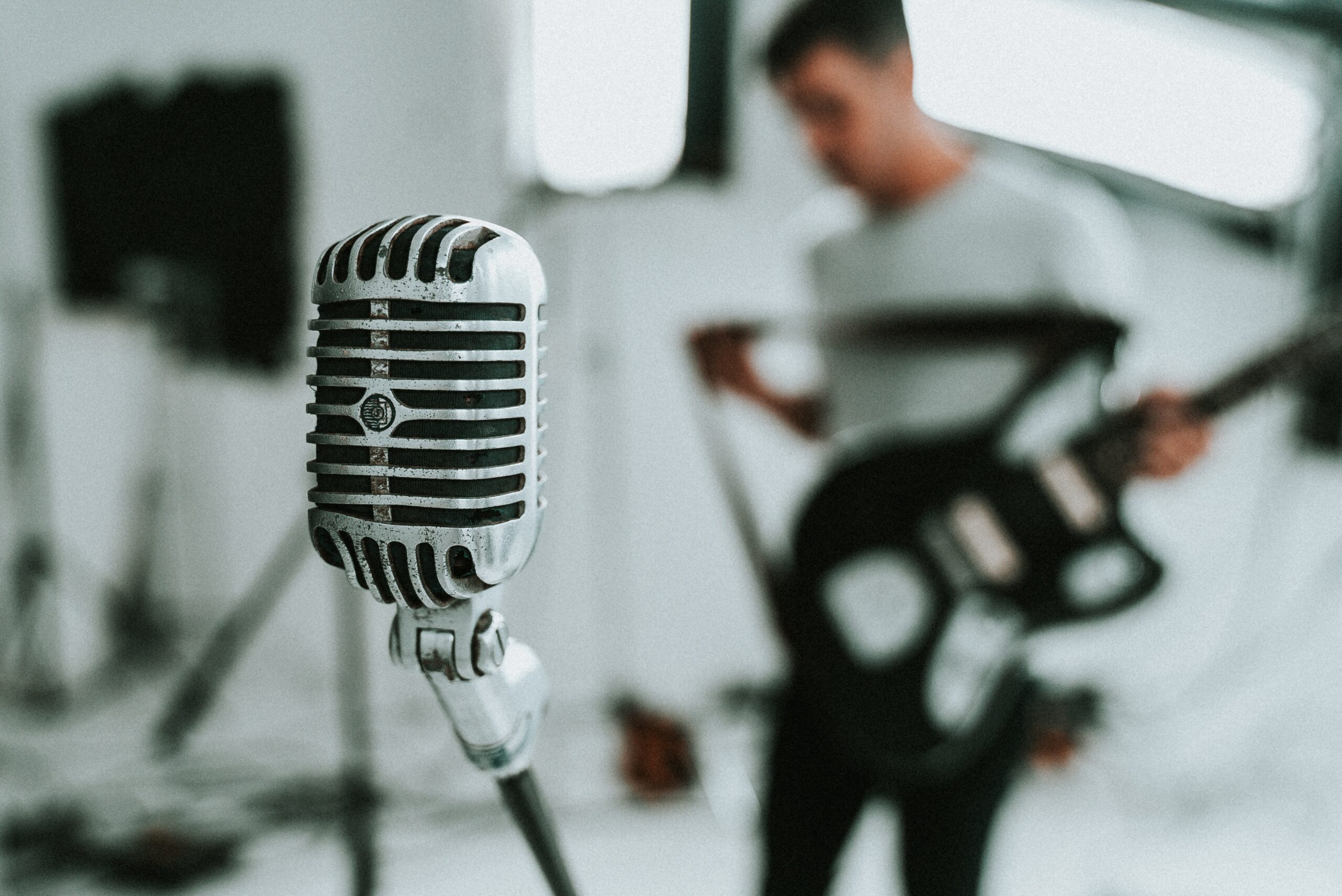
Microphones, and all their necessary (and unnecessary) accessories, are complex.
Each one is unique and has special applications, so it can seem daunting when you’re trying to get something for your music career.
It’s important to take the time to research any mic you’re looking to buy. Second opinions, reviews, and taking the time to learn how to use one is crucial.
Especially with mics, throwing money at the problem is never the answer.
Rather, be patient, especially if you’re new to it.
You’ll often be surprised by what you can accomplish with your “beginner’s” microphone!
If you’re new to the home recording world, my blog post How to Set Up a Home Recording Studio covers everything I’ve learned about the process.

